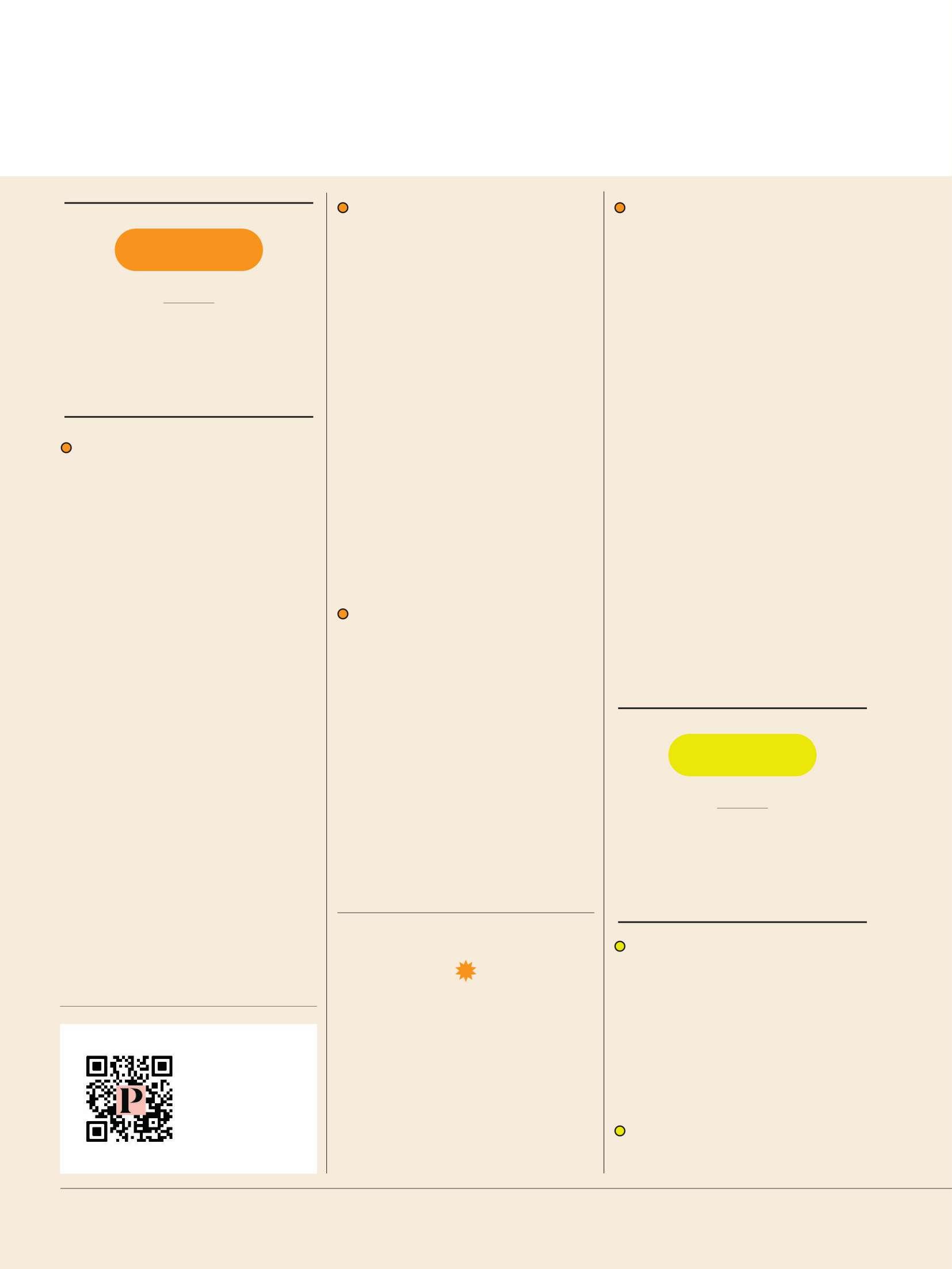
4 minute read
5–6 Years
Age s + S t age s
A D V I C E A S Y O U R C H I L D G R O W S
Advertisement
P R E G N A N C Y
H O W T O
Get Ready for Another
by E M I LY E LV E R U
Expect physical changes sooner.
You may have heard mom friends say their belly “popped” quicker in their second pregnancy than it did in their first, and they’re right. Think of your uterus as a balloon: The first time you try to blow it up, it takes a bit longer for the latex to give. But if you let out the air and try to blow it up again, it expands much more quickly. Because your abdominal muscles, supporting ligaments, and surrounding tissue and fascia have already stretched and relaxed during your first pregnancy, your uterus will be faster to grow this time. You might also notice fetal movement up to a month sooner than last time and experience more uterine cramping. Muscle laxity can also cause joint or back pain, but you can try to relieve it by wearing a maternity belt, placing a heating pad on the achy area, stretching, practicing yoga, or getting a prenatal massage. If none of those options work, consult your doctor. Pain that persists should be evaluated. But here’s a big plus that you’ll be happy to hear: Many moms feel less nauseated during a second or third pregnancy.
Get More Age-Specif ic Tips
Hover your phone’s camera over the smart code to subscribe to our daily newsletter.
Be strategic.
While you likely enjoyed the newness when your first child was born, having to take care of them while you’re pregnant may make you feel more exhausted and overwhelmed. Remember to ask for help. Call on trusted family and friends to build your village of support and watch your child when you need a break to run errands or just take a nap. Pick up healthy prepackaged snacks that are easy to grab on the go, like individual yogurts, string-cheese sticks, and precut fruits and veggies. Try to prep for breakfast after your child goes to sleep to make the next morning easier; overnight oats are a good pick. Then, before your child wakes up, take those extra minutes just for you—to stretch, meditate, have some tea, or do a quick workout.
Prep for another birth.
Each pregnancy and delivery experience will be different, but your having been through it before should help reduce your anxiety. Most vaginal second labors are shorter, both in the dilation stage and when pushing, and about three quarters of people who had a cesarean before will have a C-section again. (Talk to your doctor if you would like to try for a vaginal birth.) If you delivered early the first time, you’ll likely go early again; if you were late, you’ll likely be late again—but still a few days earlier than before.
Enjoy one-on-one time.
It’s perfectly normal to feel you won’t be able to give your older kid enough attention once your new baby arrives. And they may be feeling the same way. Reassure your firstborn of how important they are to you by including them in your plans. Let them help you pick out a name, weigh in on baby items, and draw a special picture that you frame for the nursery. If one of their favorite things to do is snuggle with you while watching a movie, help you prepare an easy meal in the kitchen, or engage in silly dances to their favorite songs, you should continue doing so. Also, be sure to switch off with your partner so you can get some much-needed rest. When your child knows you still have time for them, it will make the transition of a new baby all the more enjoyable.
Sources: Ricky Friedman, M.D., an ob-gyn at The Mount Sinai Hospital, in New York City; Peace Nwegbo-Banks, M.D., an ob-gyn and co-owner of Serenity Women’s Health & Med Spa, in Pearland, Texas.
0 – 1 2 M O N T H S
H O W T O
Keep Them Happy in Their Stroller
by J E N N A W I R T H
Provide ample entertainment.
Enjoyment while your baby is in their buggy can be provided with a variety of multisensory toys that clip onto the tray or arches. (Keep extras in the stowaway compartment so you can rotate them in.) If your baby prefers to be held or dislikes the stroller, try enticing them with a pacifier, stuffed animal, or teether.
Help them feel comfy.
Ensure a better, more physically comfortable fit for your baby with help










